It’s a rarified way of making music – the ultra-minimal monome grid and norns open music platform. But what is it really about? We turn to reviewer Andreas Roman to find out.
This is the same Andreas Roman who has been reviewing other, more conventional dedicated boxes – the 1010 Blackbox sampler, the Elektron Model:Samples. With norns, we go into new territory.
Let’s start by giving this article a soundtrack, because Andreas is already making gorgeous music – which is, presumably, the point of all of this. Timber is the app; no processing added. -PK
I’m a minimalistic kind of guy, and I love things of beauty. It’s just the way I’m wired.
For this reason more than any other, I’ve always been attracted to monome gear. Intrigued and confused, I’ve tried to find an answer to what their stuff actually is. What it does. But I’ve either met people who are as ignorant as I, because they haven’t owned or tried monome kits, or they’ve been pulled right into it and emerged with explanations that sound like something from Blade Runner.
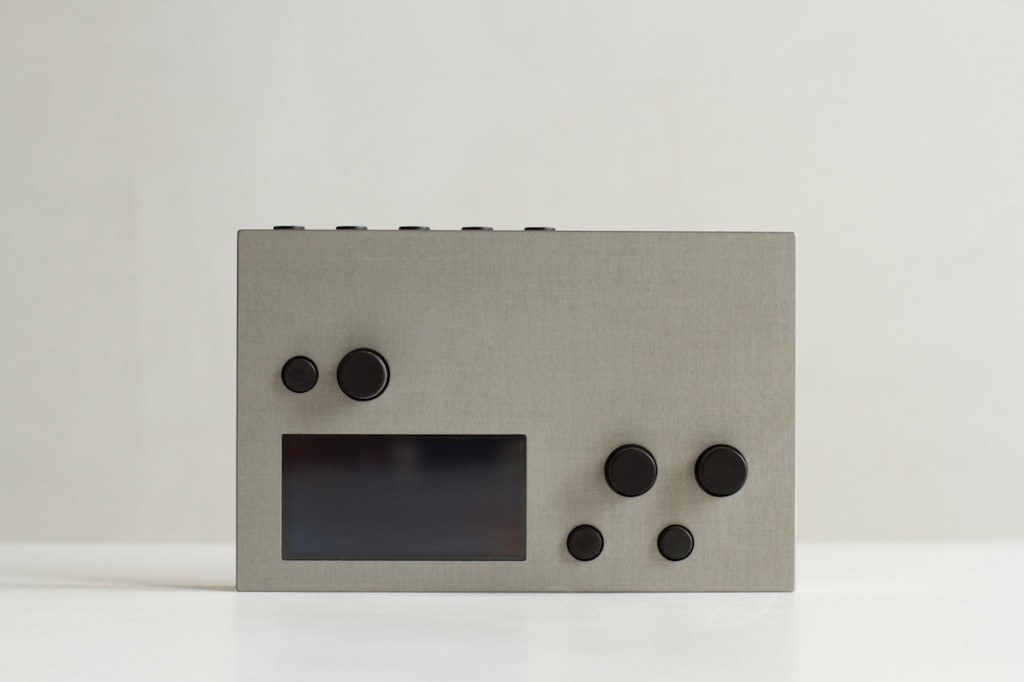
So I decided to take the journey myself, rather than rely on someone else to share their experience. There had to exist something in that gap between monome’s sometimes-abstract, sometimes-functional way of describing their output. Otherwise, they wouldn’t have been around this long. And when I lurked the forum to pick up the vibe, it just felt … right, I suppose.
lines, as it’s called [////], wasn’t just a place for monome people with monome gear. It was a place where people enjoyed having a conversation on all kinds of things.
So I sold some stuff, placed an order, cleared my desk and on the fourteenth day of shipment, the norns and the grid arrived.
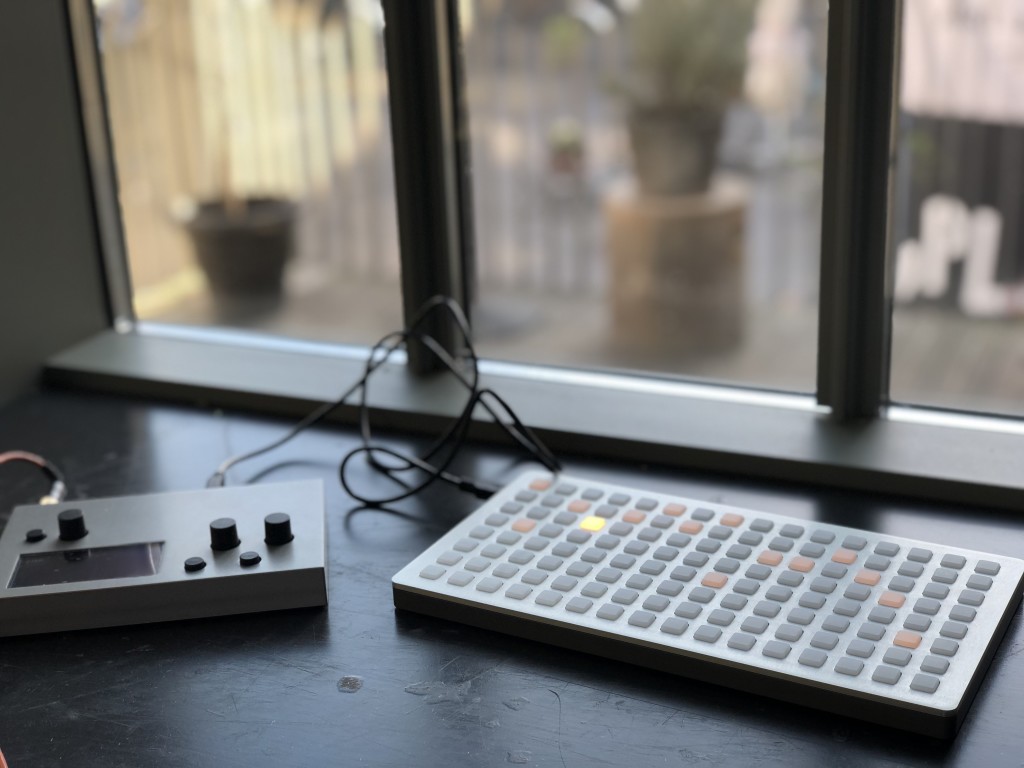
Photos by Andreas Roman unless otherwise indicated.
norns: state of play
We’ll start with norns. norns is a hardware console. Like a PlayStation, but for music.
Well, okay. It’s a lot more than that. I’m selling it kind of short. But we have to start somewhere. So conceptually, this is where we’ll begin.
On its own, norns is just a platform. As on a video game console, nothing happens – of any lasting interest – until you launch something. On a PlayStation, you launch a game. On norns, you launch a musical application.
When you do, norns becomes an instrument. Applications, or scripts as they’re called (because they really are scripts, but we’ll get to that, too) are free and developed by an ever-vibrant community. This act of sharing means that Norns can become many things which we people wouldn’t believe, as someone from recently mentioned science fiction story might’ve put it.
You install scripts on norns like you would download a game to your console. You keep them or remove them, as you would with games on your console. In time, you’ll build up a library of favorites. You pick a script, fire it up and go.
Fancy an Elektron Digitakt equivalent? Select Takt, and you get a groove box that samples, has a song mode, parameter locks and fx chains.
Maybe you just want a proper synth. Select Molly the Poly for a polyphonic something, oozing with character. Or pick Moln, which is my own personal favorite.
What if you just want to sequence, [Roland] x0x-style? Select Step for an eight-track grid sequencer – with samples, if you like. Or go for Kria, and you’re all set for polyphonic MIDI [MPE, as on Sensel Morph, ROLI, and Linnstrument].
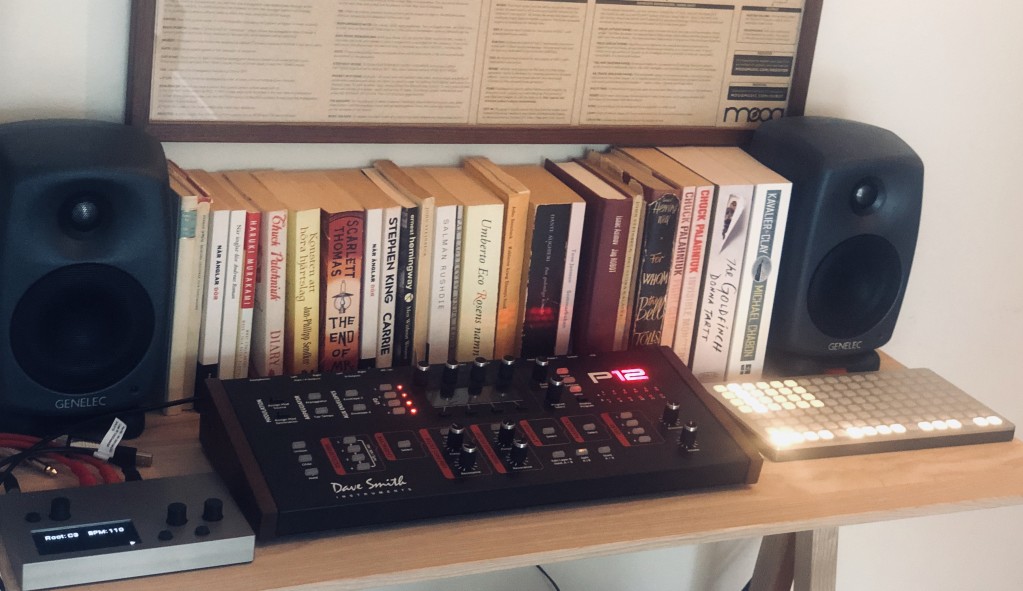
But you just like to play it live, don’t you? Use mlr or Timber and you might never need Ableton again — onstage or in-studio – for structure, at least.
I’m mentioning just some of what’s out there, the more conceptually straight forward examples, but norns is a Pandora’s box. Once you open it, your perception of how to make music could change forever. Like modular, the level of creativity on display is as fascinating as it can be overwhelming. Beyond the mandatory sequencers, synths, and samplers, there’s just a whole lot out there that does bonker things with delightful results. Random samples run through vintage radio distortion, a grey cloud generates rain and thunder, John Conway’s Game of Life is molded into a sequencer … if we’re sticking with the console analogy, you’re in the equivalent of a video game online store, and you can browse your way to something you like and go for it. You won’t like everything, but everyone will like something and even the most out-there scripts will find an audience.
https://monome.org/docs/norns/app/
The platform
Norns isn’t a curiosity reserved for the hipster musician. It doesn’t need an alibi for its existence, such as being super-portable (it is, in the palm of your hand), or that it runs on rechargeable batteries (it does). It’s a serious piece of quality gear, as an instrument.
Each script decides in detail what you can and can’t do, just like any instrument would. There aren’t as many synths as there are samplers or sequencers, but it’s not lacking. The synths sound great, with the help of the SuperCollider engine under the hood. You can build deep and thundering bass lines, play with wide and open pads, tear through the mix with a sizzling lead, or anything else you would want from a good synth. You even get modulation and effects, patch memory and polyphony.
However, sampling and audio manipulation is where norns really shines, via the wonderful softcut engine originally developed by Ezra Buchla and monome’s Brian Crabtree. softcut is ready to rework your direct input, live loops, or pre-recorded material from here to granularity. The platform also provides a master reverb and compressor, which can smear and pump, put you in a cathedral or a basement, glue it all together, or break it apart. If you like what you’re hearing, there’s a tape module that records the master stereo output straight to the norns internal drive, with 2GB space available for audio. Should you need more, you can expand this with a CM3+ module, which provides you with up to 32GB of space.
So like I said – norns is a hardware console. It provides a platform. That platform allows for monitoring stereo ins and outs, processing through compression and reverb, playback and recording. It’s recently updated with strong clock sync abilities and MIDI routing, including support for Ableton Link, as well as general patch management. I know for a fact there’s more on the way.
When you launch a script, norns becomes an instrument that resides on this platform – be that a sequencer, a synth, an FX unit, a sampler, a live performance tool or whatever else anyone can dream up.
But if we’re sticking to the console idea, we need a controller. A game without a gamepad isn’t much fun, after all.
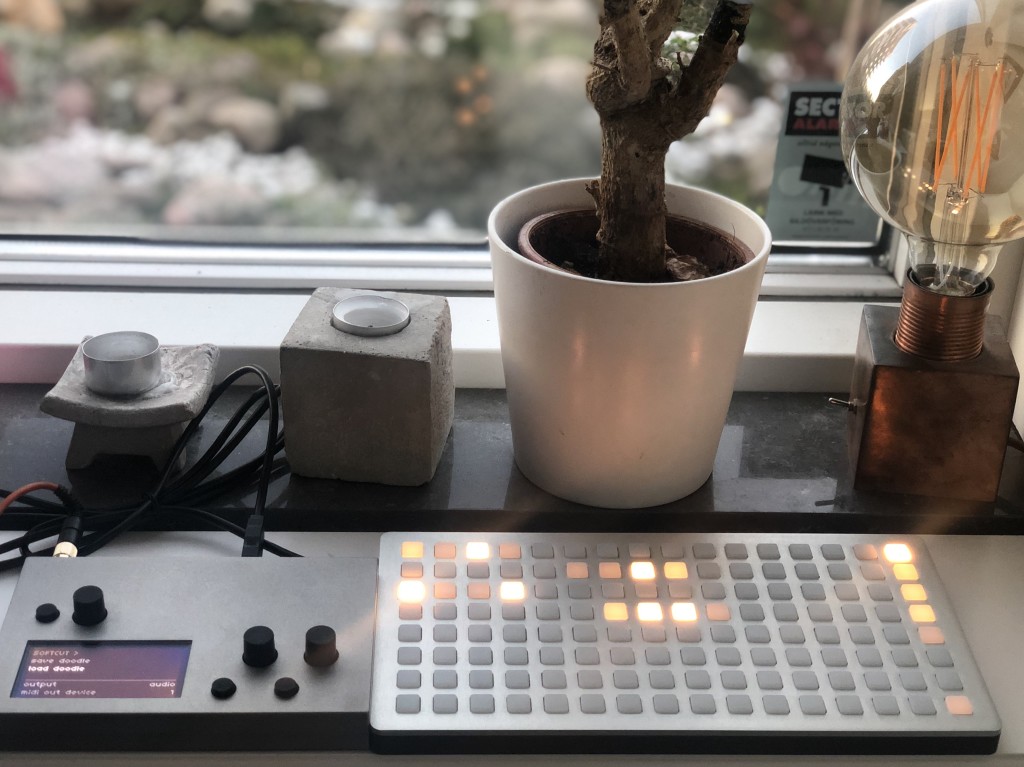
Grid runner
Many of the attractive scripts rely, and quite rightly so, on the grid – the monome grid, specifically. norns plays nice with MIDI (keyboards and stuff) and has a solid integration for external hardware if you want to get funky with your Faderfox.
But the grid is something else, the grandmother of all push-button controllers. It’s been around in one form or another since 2006, it was monome’s first and only product for quite some time, and with a set of 8×16 brightly lit pads, the grid is a controller defined by the script that controls it. [Ed.: The original edition of the grid was synonymous enough with ‘monome’ as to simply be called ‘monome’ – rather than its original, geekier product name, 40h, or later monome ‘series’. Now, the official name of the monome grid is simply that – grid.]
The grid is nothing until you connect it to norns and run a script. But once you do … dear lord. Sequencers and granular samplers, synths and live performance kits, they all soar and spin like fireflies when you play this no-nonsense instrument. It gives you the feeling of an almost drug-induced, hypnotic state of mind.
[Community-contributed] scripts can be frustrating at times. Official monome tutorials and documentation around the norns and grid are stellar, but documentation on specific scripts vary. Some are great, some aren’t, and the grid functions differently between applications. There’s consistency across the scripts, but each one is its own, in the end.
Once the internal logic of a script’s integration with the grid falls into place, you’ll be carried away. My first half-hour with ‘cheat codes,’ for example, I was scratching my head and feeling offended. Once I decided to actually read the manual – cheat codes is a prime example of a well-documented application – it was another story. Before long, my kids and their friends were dancing around to my beats in the living room, like the sun would never set.
grid, paired with norns, can be anything from groove box to clip launcher, a MIDI controller, a sequencer, a granular workshop, a slicer or a combination of things, if the script is so designed. Some are specific; some merge and mix ideas and become their own mutation.
The grid allows for interactions and performances that you wouldn’t think of with other controllers – into mesmerizing patterns of performance and interaction. It might seem intimidating, with only lights to guide you along the way, but this primal way of approaching music is why it works so well. With nothing to lead you but the instrument’s response to your playing, you’re back to basics – just as with learning the piano, guitar, drums, or singing – though this is far easier, of course. It only took me an hour to own the living room floor on a Tuesday night, but it takes me weeks to learn a Mozart sonata. And I never got my kids dancing to Rondo Alla Turca anyway.
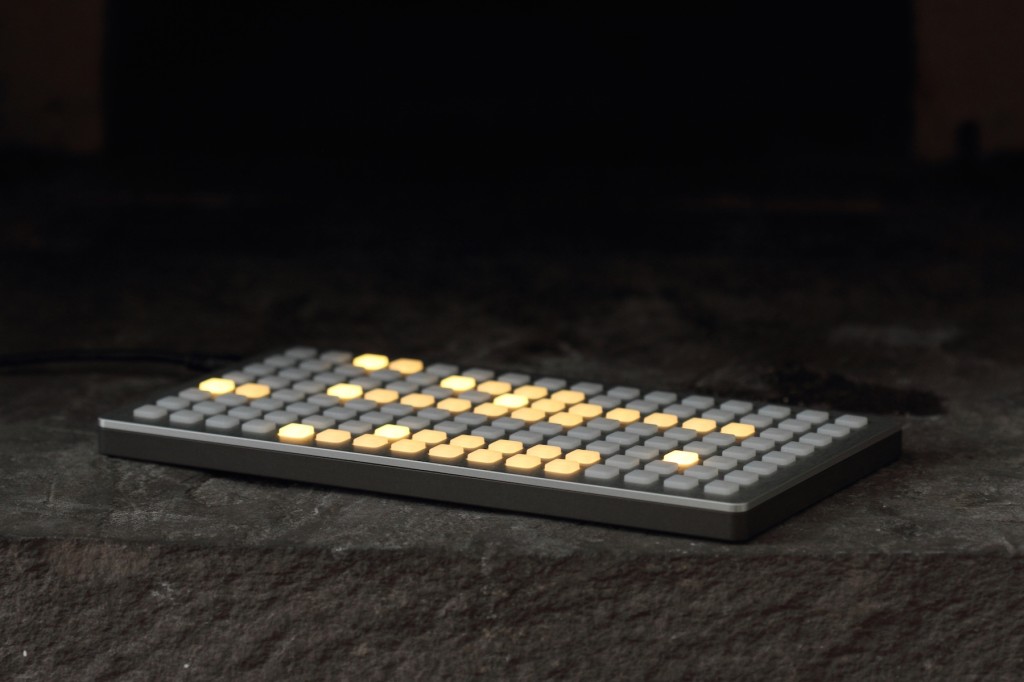
Do it yourself
We’re not done yet. Norns is a platform for anyone who wants to write a script.
Anyone. Yes, you, too.
norns relies on Lua, a mature language that’s been around for decades and powers everything from garage trifles to triple-A video games. It’s easy enough to approach if you’re dedicated, even if you’ve got zero coding skills. Lua talks to most of what’s inside norns, such as the sound engines, the clock module, the midi routing, the relationship with other hardware and then some. If you need it, study Lua and you can have it. The effort required is above something like the Empress Zoia, an effects pedal to some extent is based on the same basic idea, but also delivers a wider range of possible outputs.
No matter your skill level, there are resources to empower you to approach this. Hundreds of hours have been spent on producing tutorials and studies to remove the veil from the abstract, helping anyone learn the skill to build an instrument or create a composition. I’m sure some of you will go, “Yeah, like I could code. Ever.” But I’d challenge you on that and say that within minutes, you’ve scripted your first something on norns, by simply traveling here:
https://monome.org/docs/norns/study-1/
Now, you’re one step closer to the sampler, synth or sequencer that you want to make.
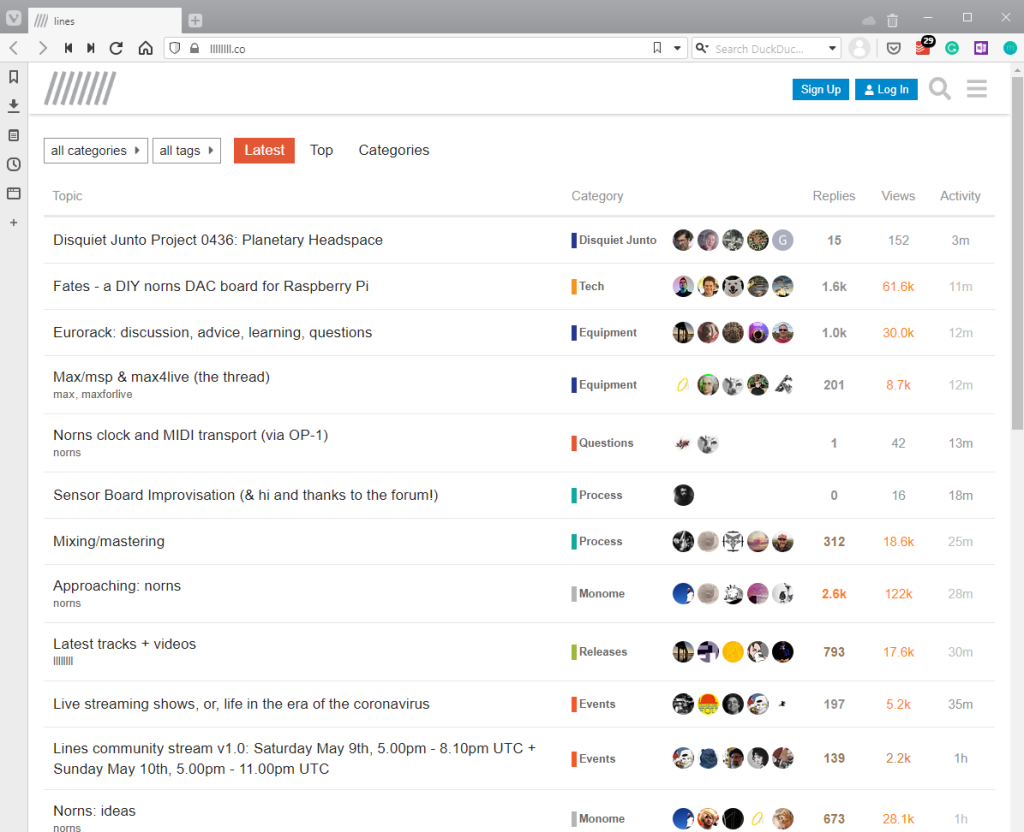
A strong community
The hardware is bound up with the community; you can come to explore, make music, build an instrument, or participate in someone else’s build. There’s a full circle of participation on norns and grid, one ignited by enthusiasm, powered by skill, and fuelled by compassion. Just by using the scripts, by making music with them, you will play a part.
It’s demonstrated in many ways. Users contribute on the forum with anything from new scripts to collaboration on existing ones. They’ll help out with documentation and feedback. They’ll apply the designers’ ideas to create songs, perform them on stage — and then return with the results. monome is very present in all of this, as shown in the norns/circles projects, where one of the founders, Brian Crabtree, launches projects built around a specific idea with a set timeframe and then invites anyone to participate and learn. In a collaborative context, seasoned vets and mentors share their knowledge and advice, while coaching the participants through the challenges of coding.
This seems to be the core philosophy around monome in general and norns in particular, to engage and share, to learn and grow together. But all the same, the musician who comes here only to create a song will find a plethora of amazing tools that do great things for this purpose.
Mind over matter
To that musician, we should adjust expectations, so that you’re not asking for things that these kits never claimed they would provide. This is high-end gear and a substantial investment of money. There is a DIY norns shield kit, which is substantially cheaper than a pre-built norns, but it requires some soldering. Either way, an educated decision is recommended.
Each script is its own island. They don’t talk with each other simultaneously. You can’t fire up one script and link it with another, as you’re jamming about. You can record the results into the platform tape module and then use that in mlr (or Reels or cheat codes or Takt or … yeah, you get it). But the more traditional of us will, at first, wish for more connectivity.
I can’t think of any serious user case the norns couldn’t handle in theory, but I can think of a few for which there is no script yet to handle it in practice. By nature, curious exploring is required to make norns and grid work with your rig. It’s a kit that seems deceptively self-sustained. But just because it records, clocks, does mastering, and contains lots of instruments, doesn’t make it a DAW. And scripts aren’t plugs. [Ed.: Yes, the latest episode to be titled – don’t toss your computer in the bin.]
But I think we’re starting to realize that hardware is at its best when it’s not trying to be everything – especially here, born from a philosophy that values learning and collaboration.
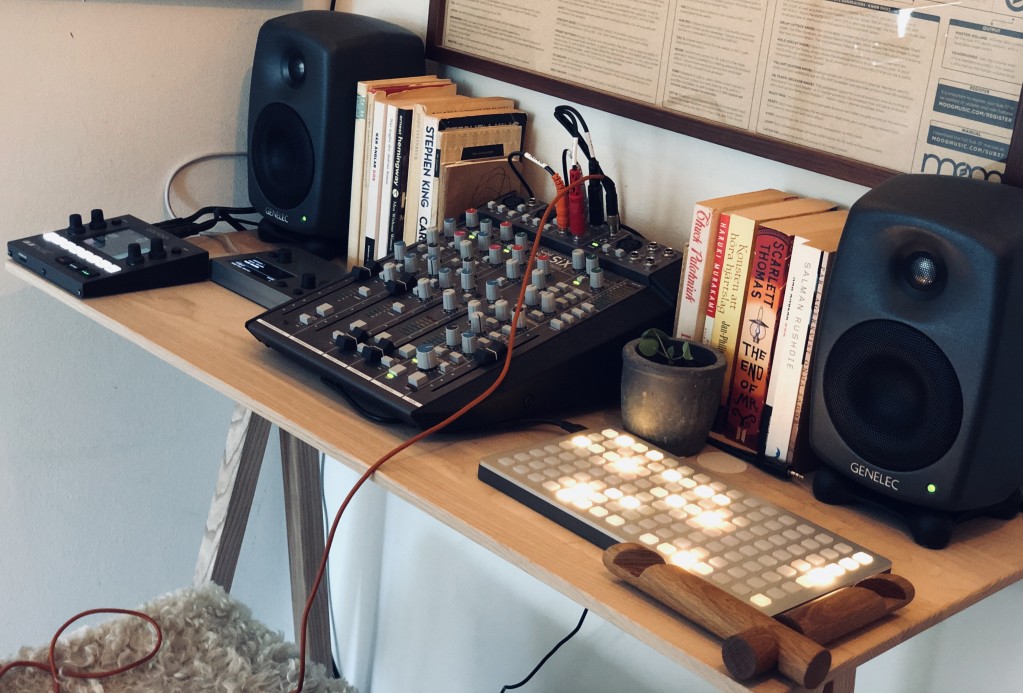
I can easily see a creative DJ tear up an entire set with the norns and grid only, running the coolest controller in town on stage. This is, in fact, what I’m preparing right now myself. With the Timber script, which provides quantized clip launching, a set of envelopes and LFOs for organic movement, and some good-old daredevil improvisation, I believe I’ve got a show going.
So if you just want to start by launching some bangers, norns and grid can do that. But lately I dream of other things, too – and the reach into more experimental territory is in easy reach with this combination.
Conclusion
Norns and grid challenge me – but I’m learning I was in my comfort zone for too long. The humanist in me loves the true and honest investment from the people engaged in this. When such profound emotions mix with bleeding-edge technology, it becomes the epicenter of what music can be, for me.
The ideas and people surrounding it are the gravity that gives this thing lightning speed through the cluttered orbit of gear. I figured, I can’t be the only one wondering — not daring to take the leap because I just don’t get it. Now, maybe this has been my contribution to the community, to shed some light on something that I truly think is worth its place in the sun.